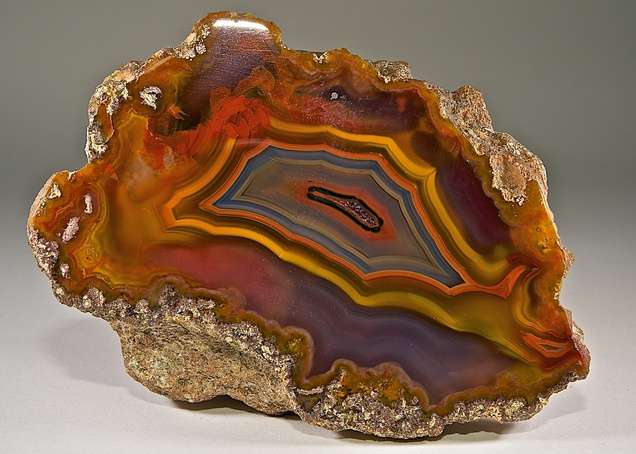
Appearance
Adularia is a potassium aluminosilicate (KAlSi3O8) and a feldspar mineral. It frequently crystallizes as colorless, glassy, prismatic, twinned crystals in crystalline schist cavities and low-temperature felsic plutonic rock veins. Some examples of this type of phenomenon are the Alps schists. Adularia that exhibit an opalescent color display are referred to as moonstones.
Geographical Distribution
Adularia is typically found in alpine regions, such as the Apuan Alps in the province of Lucca, Tuscany, Italy; many valleys in the Swiss Alps; and the Hohe Tauern Mountains in Salzburg, Austria. Additionally, the Astore District in Pakistan’s Northern Areas is home to Adularia.
History
Adularia is a low temperature form of orthoclase or microcline that was first identified in the hydrothermal deposits found in the Swiss Adula Alps. Ermenegildo Pini gave the first description of it in 1781. Adularia usually produces the adularescence optical effect in moonstone.
Metaphysical Properties
It is in connection with the Third Eye Chakra for intuition, the Throat Chakra for clear communication, and the Crown Chakra for spiritual connection. In terms of emotional healing, self-assurance, and creativity, it affects the heart, solar plexus, and sacral chakras.

Types of Adularia
Common Adularia
This type displays a soft, pearly white color and is prized for its calming effect. Common Adularia: This kind is valued for its relaxing qualities and has a delicate, milky white color. It is frequently applied to improve emotional equilibrium and insight.
Clear adularia
Transparent crystals known as clear adularia are thought to enhance spiritual insights and enhance meditation techniques.
White Adularia
Its all-white hue represents purity and is a tool for self-improvement through self-connection.
Cream Adularia:
This creamy-colored plant is prized for encouraging calmness and emotional healing.
Yellow Adularia
Known for its cheery yellow hue, this flower is said to inspire creativity and happiness as well as increase self-esteem.
Bluish Adularia
These jewels’ subtle blue hue promotes spiritual and communication exchanges.
Sharp Adularia
Known for its pointed facets and edges, this plant is believed to cut through uncertainty and improve mental clarity.
Bow Tie Twin Adularia
These crystals encourage harmony and balance in relationships and have a light blue lustre.
Matrix Adularia
Usually white or colorless, Matrix Adularia’s therapeutic qualities are enhanced when it is surrounded by other minerals that also strengthen its vitality.
Skeleton Adularia
With their ethereal beauty, Skeleton Adularia crystals are delicate and clear, promoting spiritual growth.
Adularia that is interpenetrating
This pearly white stone promotes emotional equilibrium and inner reflection.
Side Effects
Dependency
Reliance on Adularia too much can lead to dependency. Use it sporadically and give time without the crystal’s influence to avoid this.
Mood Swings
The vitality of Adularia may cause mood swings. Use a black tourmaline gemstone to ground yourself and stabilize your emotions to counterbalance this.
Emotional detachment
This gem may result in it. Talk to someone you love every day to stay connected, and meditate with rose quartz to keep your emotions in check.
Uses
Adularia is frequently used as a raw material to make scouring powder and as a component of several glassware and ceramics, including porcelain.
Table





